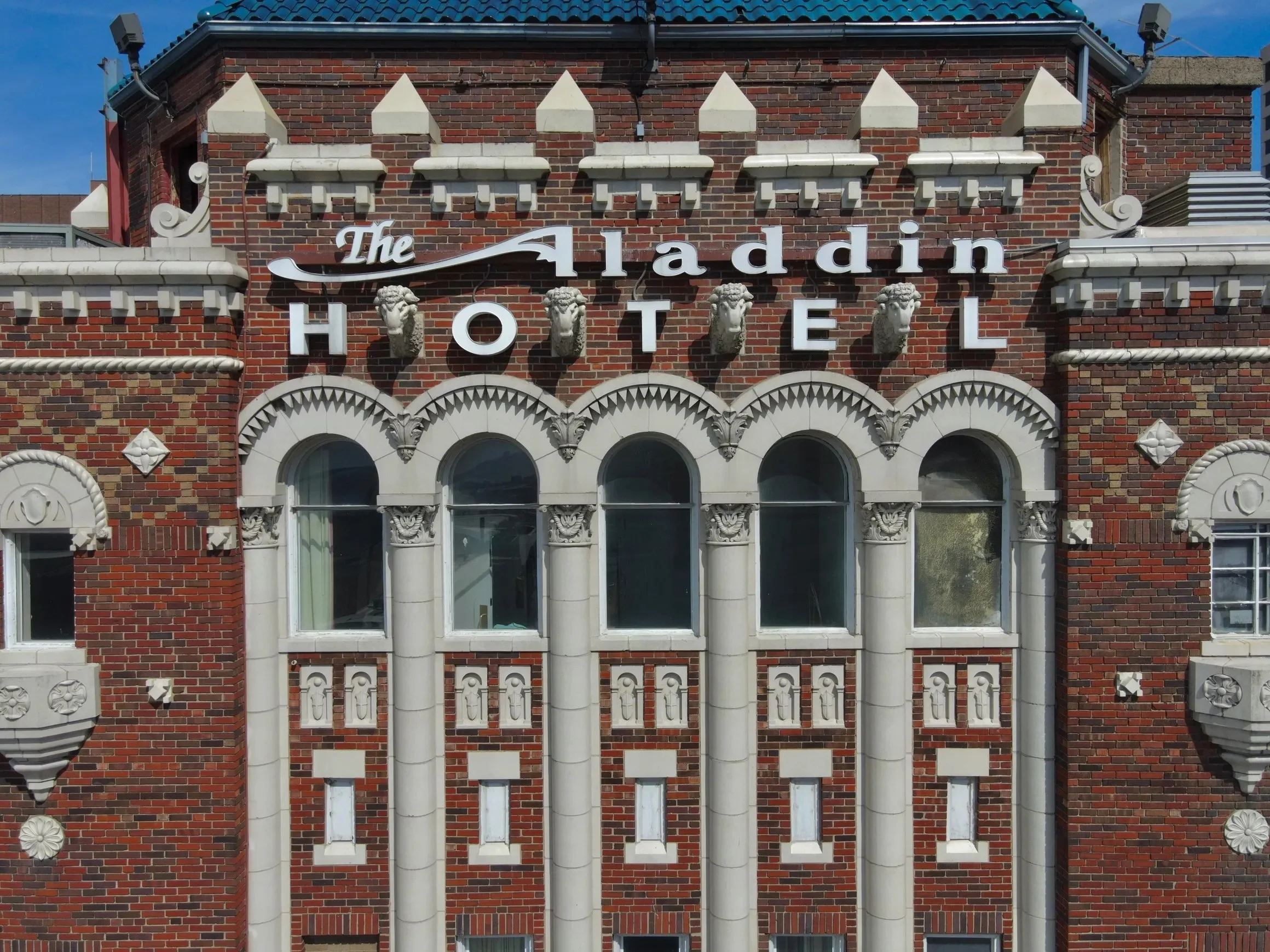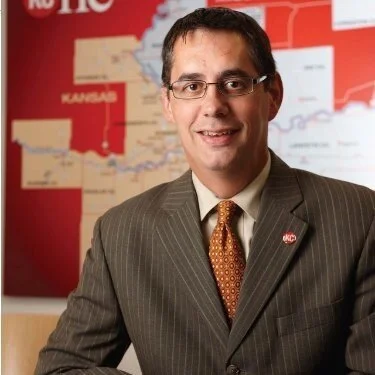During what has been a stormy 2020, even hurricane-like for some, Kansas City's economy continues to shine brightly, beaming light of even more sunny days ahead.
“From a transportation, supply chain, logistics, industrial, whatever word you want to use, Kansas City is on fire,” said Chris Gutierrez, president of KC SmartPort and moderator of a webinar panel discussion organized by the Mid-America Region of the Design-Build Institute of America (DBIA-MAR) and hosted by McCownGordon Construction on October 14, 2020.
Gutierrez’ remarks preceded his introduction of the panelists: Eric Goodman, regional manager economic development at BNSF Railway, Andy Kyser, marketing manager at UPS, David Long, deputy director of Aviation - Properties & Commercial Development at Kansas City Aviation Department and Jon Stephens, president and CEO at Port KC.
The panelists discussed the activities of their respective organizations and the implications for Kansas City, the effect of COVID on each organization and outlooks for the future.
Goodman said the big focus for BNSF in Kansas City is its development at Logistics Park Kansas City (LPKC) where BNSF’s facility opened in 2013.
“Since then, we’ve had 17 million SF of development pop up around there. That’s going to be our anchor, our footprint here for intermodal for the next 50 years,” Goodman said.
“The part of our business that’s doing really well for us right now is our intermodal business, both domestic and international. We had a dip in that volume back in March, into April and into a little bit of May, but that volume has been going absolutely gangbusters ever since that date,” said Goodman.
Goodman said he recently read a statistic that every single stored intermodal car that BNSF had in its network was back in service. At one point, BNSF had parked approximately 2,000 locomotives.
“Business is definitely back. We’re definitely seeing that there’s a lot of interest in intermodal growth coming off the west coast ports and domestic volume coming into Kansas City,” he said.
According to Kyser, UPS views the Kansas City region as an integral part of its overall strategy.
“Our mission is to be better not bigger and to really do that by being customer first, people led and innovation driven. That’s where Kansas City fits in, both on the people led and the innovation driven standpoint,” said Kyser.
Kyser noted that UPS has made significant investments in its facilities at the airport and in Lenexa, Kan. UPS recently expanded its facility in Lenexa from 226,000 SF to 430,000 SF.
“During our peak day, we used to be able to process about 1 million pieces throughout a day; that’s going to ramp up to be almost 2 million based on the infrastructure we’ve built here at the Lenexa facility. There’s miles and miles of conveyor throughout the facility. The crazy thing is that it only takes about 20 seconds from a package to get unloaded until it’s getting loaded on the outbound,” said Kyser.
Kyser said UPS is investing nearly $21 million to expand its facility at KCI.
“We’re adding about 370,000 SF- for a total of 534,000 SF- which gives us five additional parking spots as well as remodeling the facility that we have there to take the flow per hour, the capacity from 1500 pieces an hour up to 5000,” Kyser said.
Kyser said that the pandemic has not slowed UPS’ business. UPS hired 50,000 employees during the second quarter as permanent hires, just to handle the 55% increase in business fueled by the burgeoning e-commerce market.
“We’ve had to staff up and get our operations in a position to be prepared not only to handle what we view as a permanent shift, an acceleration of e-commerce activity of almost 5 to 6 years, but also our peak season, so we’re hiring 100,000 temporaries across our network during peak to be able to handle all that volume,” Kyser said.
Although growth at KCI was down this past year between 50-60% from 2019 numbers, Long said he’s seeing a steady rebound.
“In fact, Monday [October 12] was the most folks that had gone through our security screening checkpoints since the middle of March, and that is a better percentage than the country overall,” Long said.
The pandemic hasn’t slowed the construction of the new KCI terminal, and the airlines remain committed to the 39-gate overall facility, Long said.
“We are on time and on budget for this project. About 85% of the $1.5 billion is actually 100% procured so when I say on time, on budget, we know that’s exactly what it’s going to cost us. On time means March 3, 2023,” said Long.
Although Aviation Department officials were worried that there would be delays in the supply chain during the pandemic, “everything has been coming exactly the way that it needed to come,” Long said.
Long said that COVID-related measures were enacted to keep workers on the construction site safe, including adding additional bathrooms, staggering start and stop times, adding wash stations and providing hard hats with sensors that blink and make an audible sound when workers are within six feet of each other. Although there have been as many as 1000 employees on the work site, only seven have tested positive for the virus.
Long noted that the project has employed 100 minority and women owned businesses which accounted for a little more than $170 million.
“Having that kind of income into the minority community on that business is just a big shot of adrenaline into the arm, and those are all local folks that will be better skilled, better able to handle the many jobs that will happen in the future,” said Long.
Stephens describes Port KC as “a redevelopment entity and a reclamation entity that really focuses on under-utilized, under positioned places and brings them back to life with private sector partners and sometimes with public sectors.”
In 2015, Port KC brought back to life the Woodswether Terminal in the West Bottoms, which Stephens described as one of the most unnoticed small bulk goods terminal ports in the area.
“We’ve put about $22 million into that facility and we’ve doubled the tonnage every year since 2015. In 2019, we went over 100,000 tons transferred through that facility,” said Stephens.
Stephens also highlighted the redevelopment of the Berkley Riverfront where Port Kansas City continues to see growth in reclaiming the area.
Stephens noted Port KC has seen “incredible growth” at the site of the former Richards-Gebaur Air Force Base. Port KC recently rebranded the approximately 2600 total acres as 49 Crossing.
“We’re seeing significant job growth down there. That’s one of our goals,” said Stephens.
And, Port KC recently won a MARAD grant of nearly $10 million from the U.S. Department of Transportation’s Maritime Administration to create the Missouri River Terminal at the former site of AK Steel in the Blue River corridor near Sugar Creek and Independence, Mo.
“We will be working to bring 420 acres back to life with all the Class 1 rail coming through that site. We’re excited to have the MRT facility with will become North America’s first comprehensive transloading facility that combines rail, trucking and water borne commerce,” said Stephens.
Stephens said that a lot of economic development and reclamation is related to hotels and retail, and Kansas City has seen approximately a 75% drop in those sectors during the pandemic.
“On the positive side, multifamily rental units are up 50% year over year, in projects, in total units and total volume for us, 2020 over 2019,” Stephens said.
“We’ve seen a one-third growth in 2020 thus far as of October 1 in logistics and distribution and ecommerce. We may even go higher than that. In total dollars, jobs and acreage, we’re at about a 65% increase in 2020 so far,” said Stephens.
Gutierrez said he projects that in 2020, build to suit for clients or spec development will exceed 15 million sf.
“That’s a record for this market. And everything I’m hearing is that 2021 is going to be even greater,” said Gutierrez.
“It’s an exciting time to be in the industrial, transportation, supply chain space, especially in Kansas City. We are the center of everything that’s happening with supply chain and transportation growth and we’re going to hit records on industrial development and industrial construction this year and forecast an even better year next year,” said Gutierrez.







